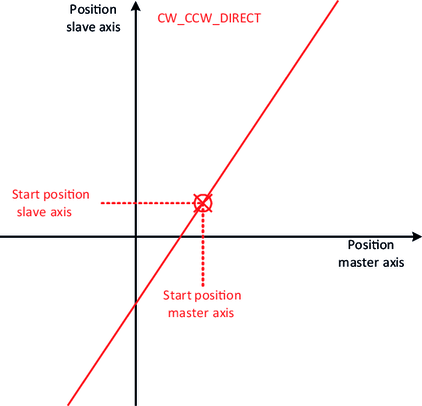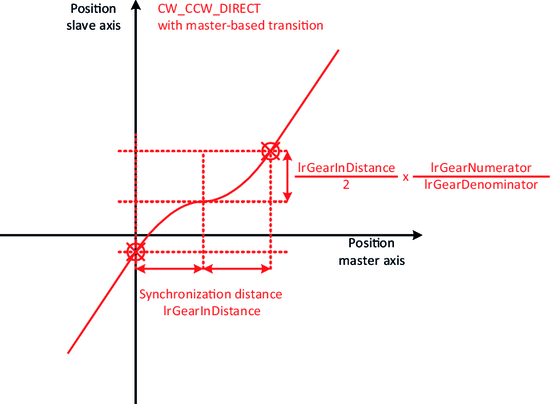Direct synchronization mechanism
In the case of the direct synchronization mechanism, the "attachment point" of the straight lines results from the start positions of the master and slave axis, meaning the positions of these axes when the xStart start signal is switched. The following diagram shows the relationship between the slave and master positions for eStartMode = "CW_CCW_DIRECT" without a transition. Starting from the current positions, the position of the slave axis is linearly developed with the factors lrGearNumerator and lrGearDenominator.

When using a master-based transition during synchronization, the "attachment points" of the lines are shifted as a function of the configured synchronization distance lrGearInDistance. The following diagram shows the relationship between the slave and master positions with a master-based transition for eStartMode = "CW_CCW_DIRECT":

In the case of the direct synchronization mechanism, the synchronization condition is met if the movement of the master matches with the configured direction of movement at the point in time of the rising edge of the xStart start signal.
During synchronization, the following applies in particular:
- CW_DIRECT
- The synchronization condition is met if the master is moving in a positive direction when there is a rising edge at xStart.
- CCW_DIRECT
- The synchronization condition is met if the master is moving in a negative direction when there is a rising edge at xStart.
- CW_CCW_DIRECT
- The synchronization condition is always met when there is a rising edge at xStart, even if the master is not moving.
If the synchronization condition is met and a transition is required, the state at eGearingState switches to "GEAR_IN". If no transition is required, the state switches directly to "ACTIVE". If the synchronization condition is not met, the state switches from "STOPPED" to "WAITING_FOR_STARTPOSITION".
